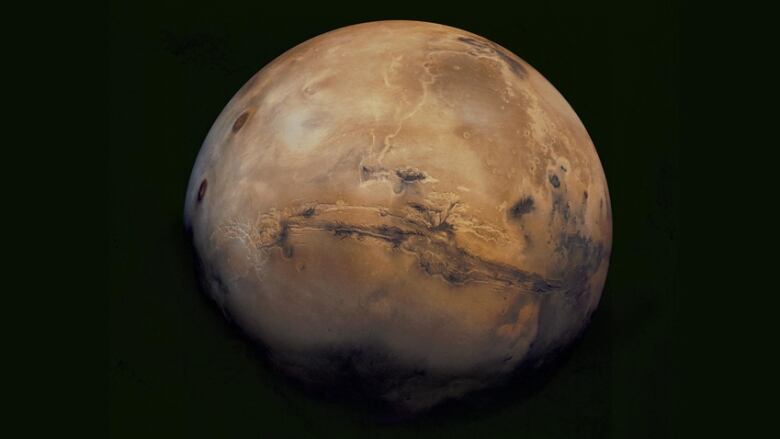Ice deposit on Mars holds as much water as Lake Superior, researchers say
The deposit accounts for just 1% of all known water ice on the red planet

An ice deposit with as much frozen water as the volume of Lake Superior has been found on Mars in a region astronauts may some day call home.
Using NASA's Mars Reconnaissance Orbiter, scientists performed more than 600 scans ofUtopia Planitia, a mid-latitude region on the planet. The scans revealed an ice deposit that ranges in thickness from about 80 metres to 170 metres and is composed of about 50 to 85 per cent water. The restis likely comprised of dust and rocky material.
- Elon Musk reveals plan to get humans to Mars within 10 years
- Mars-bound astronauts could develop 'space brain' from exposure to galactic cosmic rays
"This deposit is probably more accessible than most water ice on Mars, because it is at a relatively low latitude and it lies in a flat, smooth area where landing a spacecraft would be easier than at some of the other areas with buried ice," Jack Holt of the University of Texas, a co-author of the study, said in a statement.
We know early Mars had enough liquid water on the surface for rivers and lakes.Where did it go?- LeslieTamppari, Jet Propulsion Laboratory
Recent studies suggest that billions of years ago Mars was home to a large ocean in its northern hemisphere, which may have made it potentially habitable.
The researchers believe the deposit was likely formed as a result of a snowfall that took place during that time. It eventually built up an ice sheet that was mixed with dust. At the current latitude,which spans 39 to 49 degrees, water is unable to exist at the surface, as it will change from a solid to a gas, a process called sublimation.

The newly discovered deposit is covered by a layer ofdust believed to range in thicknessfrom about one to 10 metres.
The deposit accounts for just one per cent of all known water ice on the red planet, but will help planetary scientists better understand the history of Mars.
"We know early Mars had enough liquid water on the surface for rivers and lakes," said Leslie Tamppari of NASA's Jet Propulsion Laboratory in the statement. "Where did it go? Much of it left the planet from the top of the atmosphere But there's also a large quantity that is now underground ice, and we want to keep learning more about that."












_(720p).jpg)


 OFFICIAL HD MUSIC VIDEO.jpg)
.jpg)



























































































